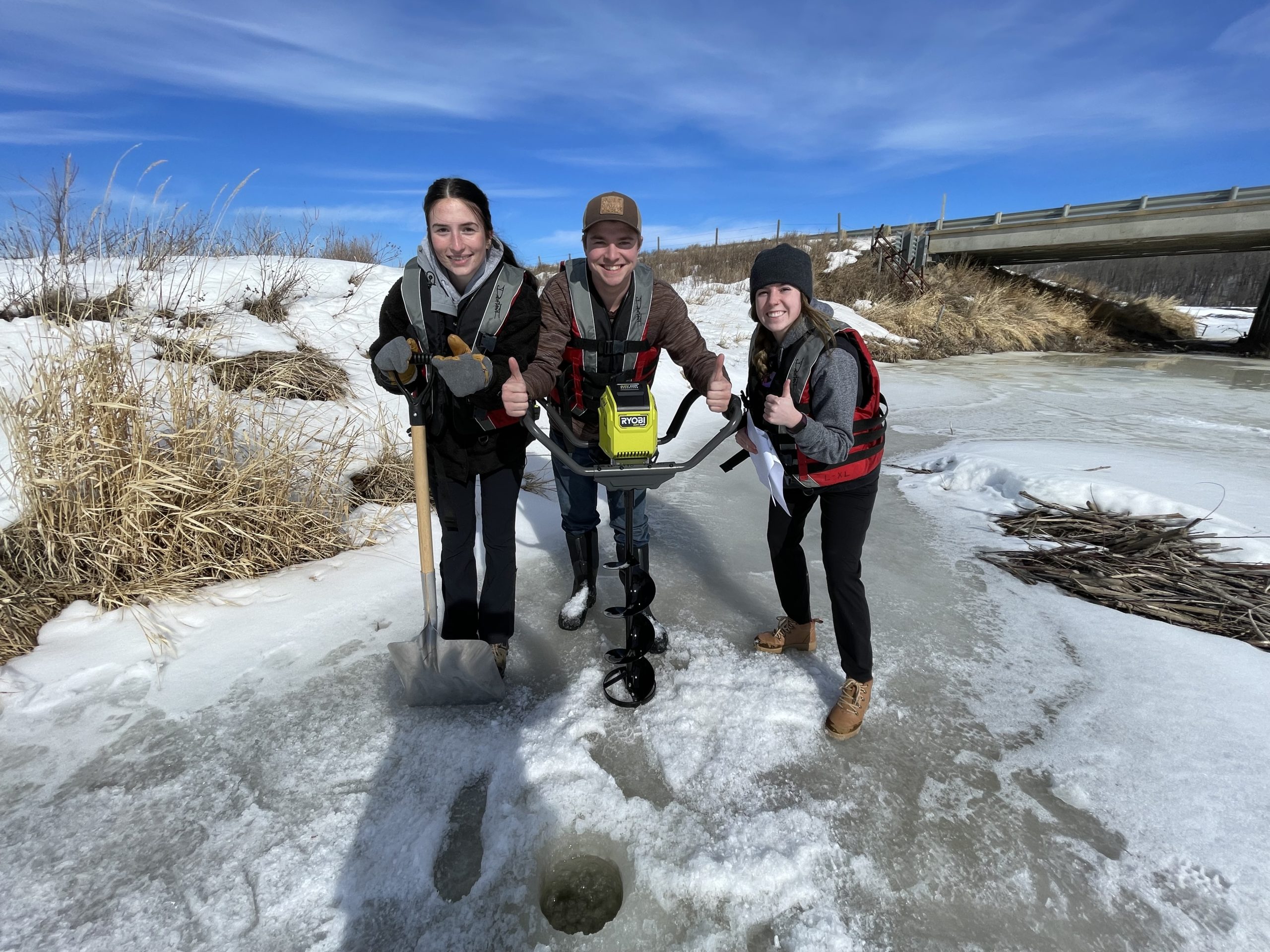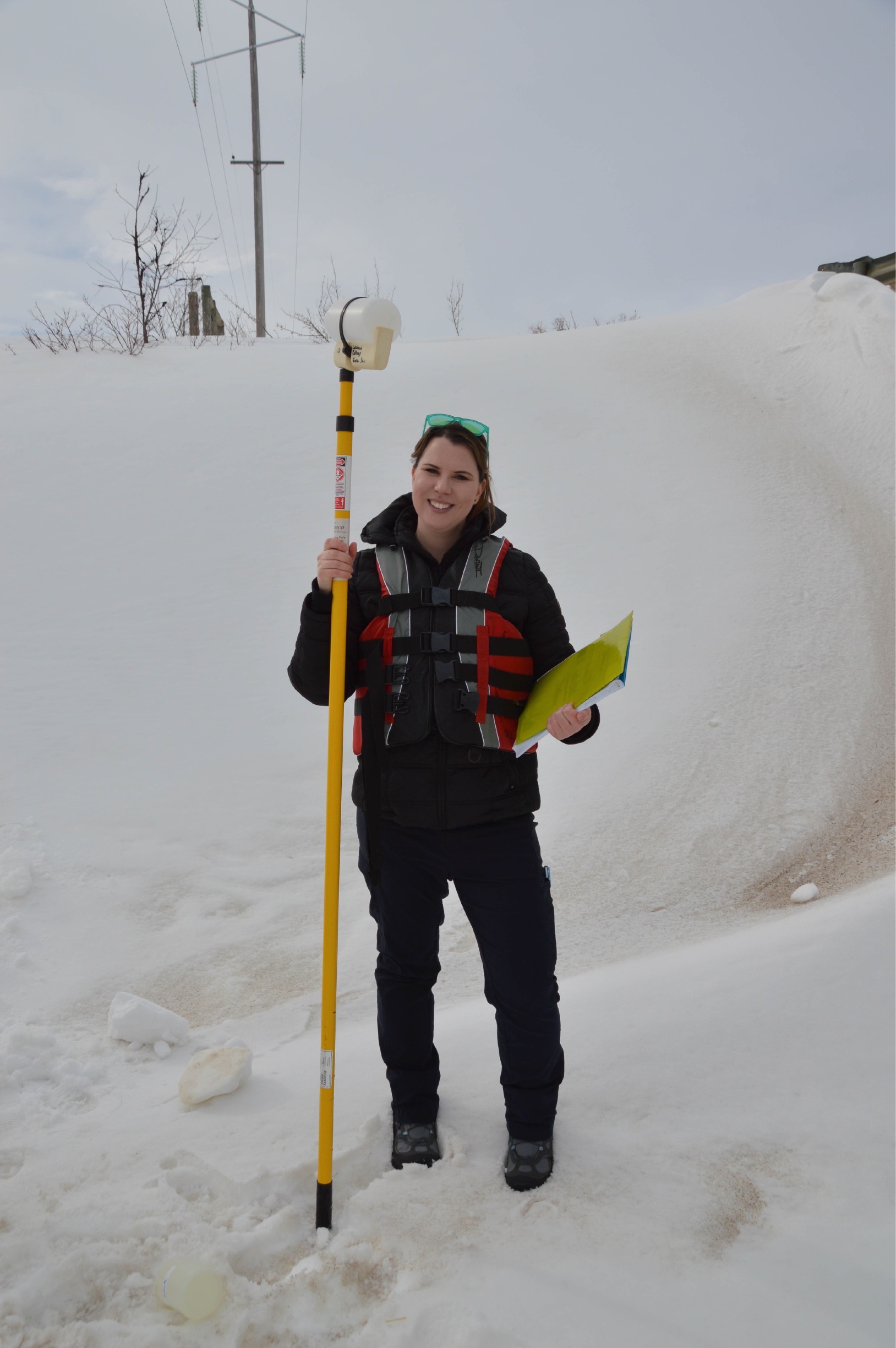A river runs through it – how a local college is engaging students to collect water quality data and memories
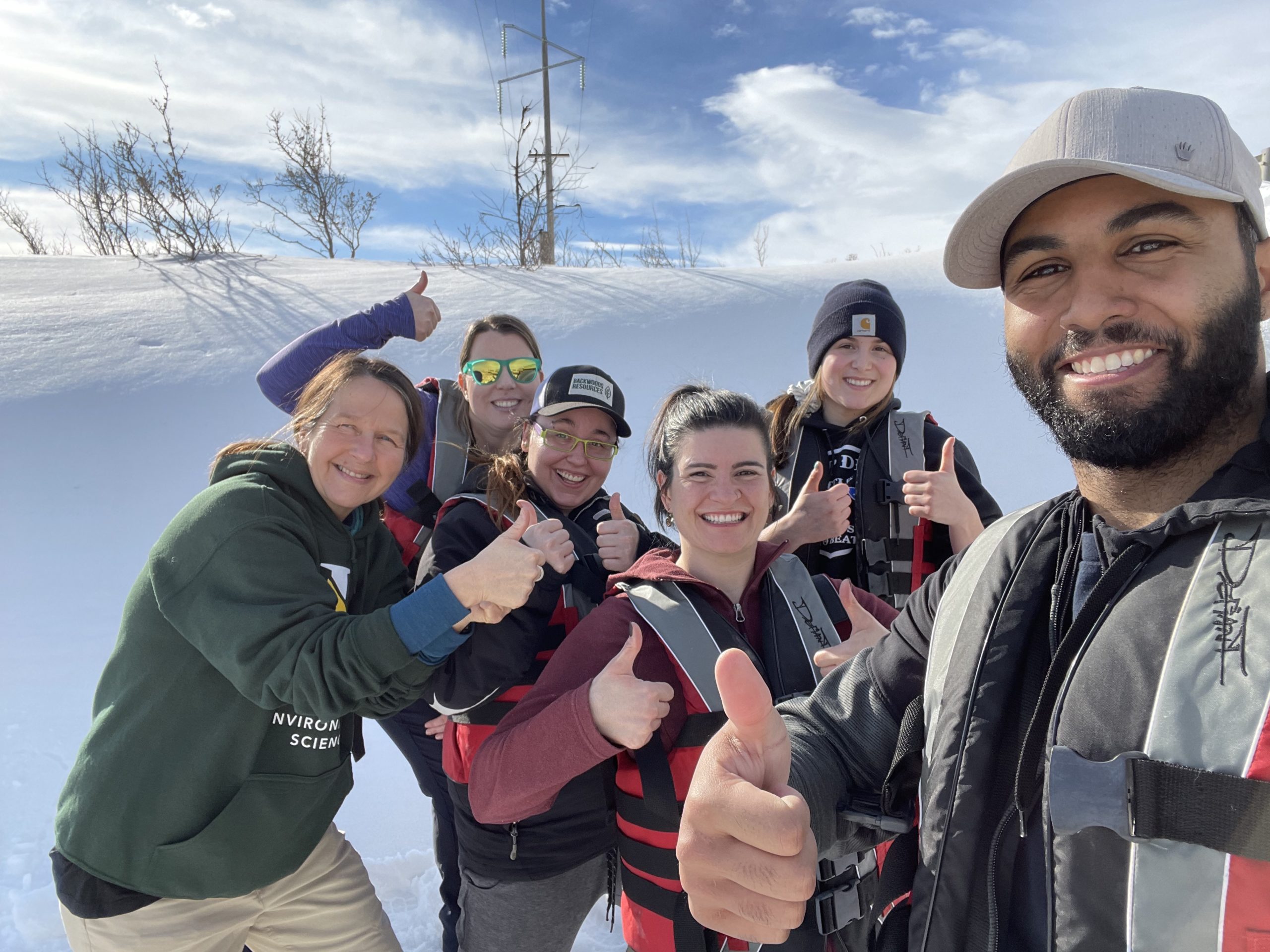
Written by Michelle Nelms
On an overcast day in Vermilion, three groups of students and instructors set out to different counties to collect water data, and another group would head out in two-day’s time to gather further samples. The unique thing about this water collection day is that it happened in winter and the water lay below thick ice.
Fueled by a pre-trip stop at the local Tim Hortons, the groups spread out across the counties to try their hands at winter water sampling. Why, you may ask, would someone want to sample water in the middle of winter, when it’s only accessible using ice augers? It’s all part of a collaboration between the North Saskatchewan Watershed Alliance (NSWA), the Vermilion River Watershed Alliance (VRWA), and the Student-led Assessment of the Vermilion River (SAVER) initiative at Lakeland College to collect water quality data for the Vermilion River.
Water collection is nothing new to the Environmental Sciences students at Lakeland College; as part of our Applied Hydrology and Limnology courses we became proficient in learning different sampling techniques and what the in-situ readings could tell us about water quality. Learning how to sample water in the winter is a new and exciting opportunity, not only in terms of having another field skill to add to the students’ toolbox, but also important data collection for the VRWA. Doing the winter water sampling as part of our Wildlife Habitat and Conservation class confirmed the importance of aquatic and associated riparian habitats as important corridors and ecosystems for both aquatic and terrestrial wildlife. In one of the groups, a long-tailed weasel (Mustela frenata) was spotted at one of the collection sites, proving that the Vermilion River in winter is host to many organisms that rely on its healthy waters.
The SAVER project’s goal is to facilitate Work Integrated Learning (WIL) for the Environmental Science students at Lakeland College through collaboration with partners, like the VRWA. Setting the students up for success in their careers through hands-on field experience is a win-win opportunity. One of the main objectives of the SAVER project is to have water quality data that can be collected and analysed routinely. By establishing the field collection by students, this ensures continual collection and involvement for years to come. This activity supports the overall goal of collecting water to assess water quality along the total Vermilion River length, from the headwaters in Beaver County to its convergence with the North Saskatchewan River at Lea Park. The data will be invaluable for watershed assessment.
"the Vermilion River in winter is host to many organisms that rely on its healthy waters"
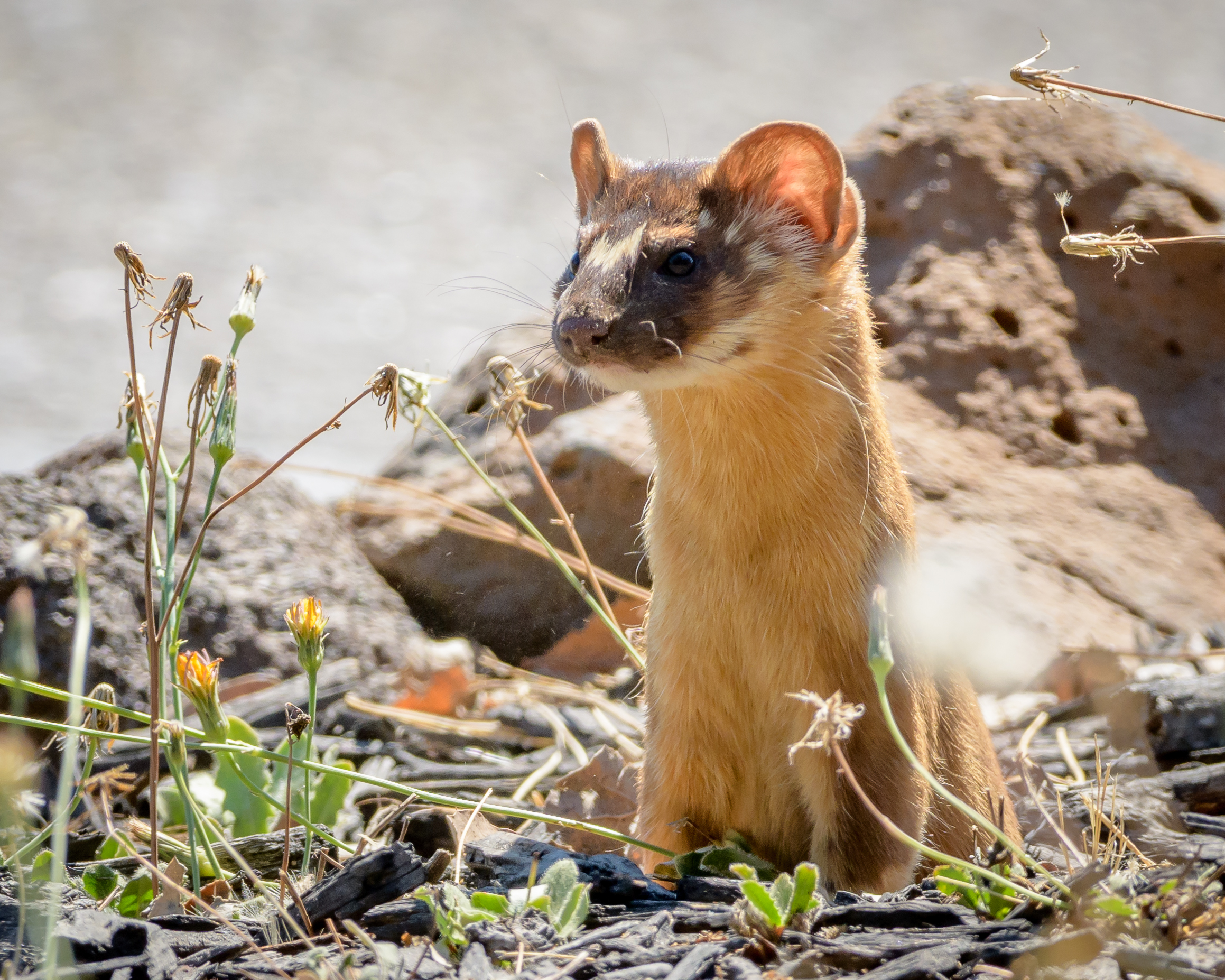
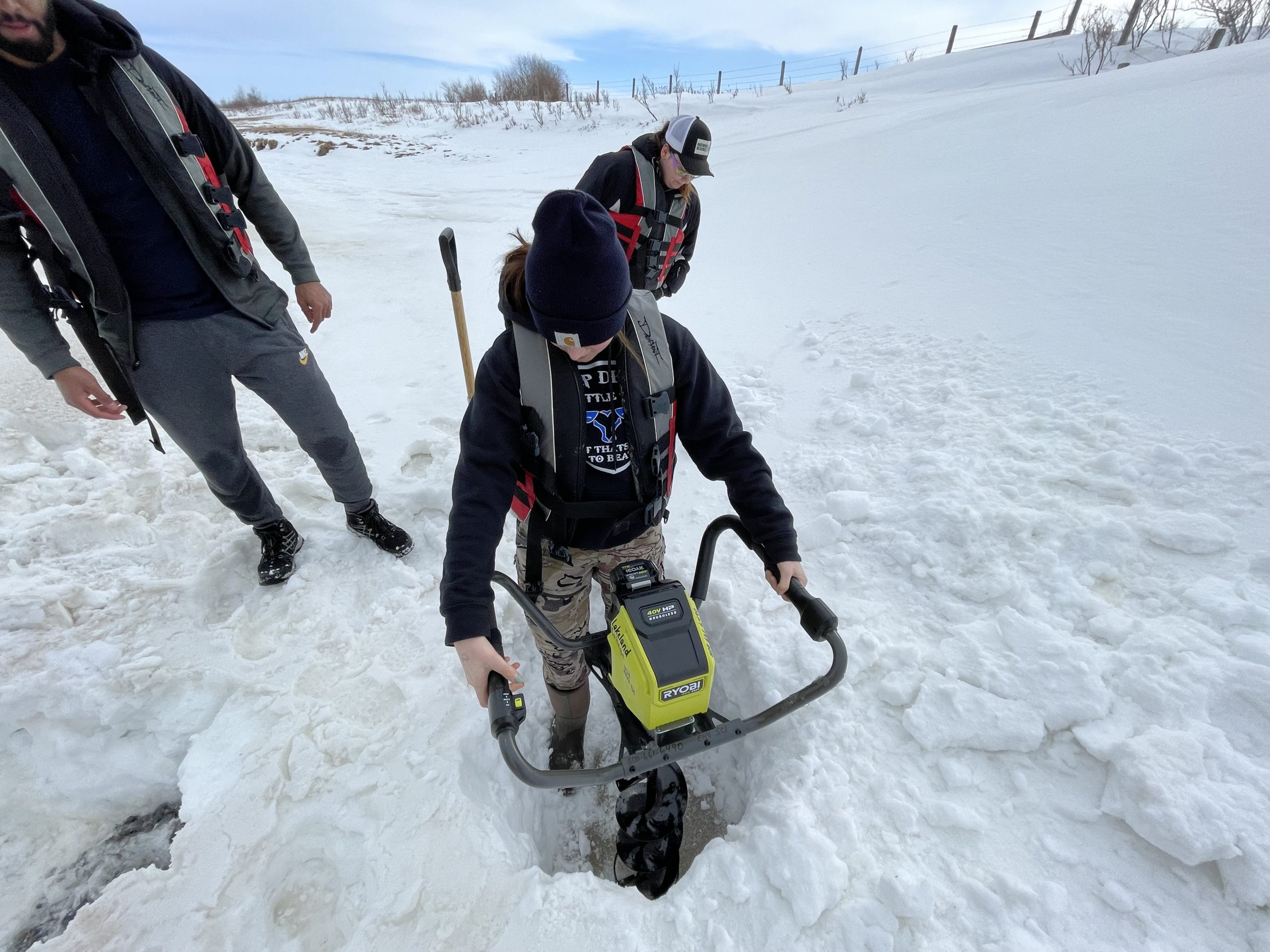
Water quality analysis is vital in determining the health of river systems, and as the 2005 NSWA State of the Watershed Report (Vermilion Subwatershed) gave the Vermilion River’s health an overall rating of poor, continuous monitoring can support needed policy and decision-making in terms of water usage, assessing industrial and agriculture impacts, and establishing monitoring protocols to protect this vital resource. As water collection takes both time and money, contributing grants, such as the Co-operative Education and Work-Integrated Learning (CEWIL), are a great benefit to projects such as these.
"Long-term monitoring is vital as it can not only help identify seasonal changes within the river system, but annual changes as well."
The project has been in the works since 2018, and based on its implementation in 2014, but due to COVID-19 delays and limited funds, work could not start until this year. Long-term monitoring is vital as it can not only help identify seasonal changes within the river system, but annual changes as well. Fluctuations due to temperature and climate changes, agricultural and industrial pressures, as well as nutrient loads can be detected with continuous monitoring. The data can identify hot spots within the watershed that may require further investigating. When problems are identified, the focus can be shifted to appropriate mitigation efforts to help improve sections of the river that are in trouble, and actions such as riparian zone restoration can be initiated. Adding winter water collection will help fill in gaps and help create a complete picture of the watershed's health.
So, what does the future look like? As with any monitoring program, continuous supported monitoring is key. By extending the SAVER water sampling program to become a year-round effort with students, it will allow for the students to experience different settings and techniques for water collecting in different seasons. Once there is enough baseline data collected, students can use that data with GIS applications to look at both spatial and temporal trends. By learning how to analyze baseline and trend models, students will have an additional skillset once they transition into the workforce, and the SAVER project will have the important data they need to make critical decisions about the watershed’s future. As students, we are excited for the road ahead and to see how our contributions can help shape the health of the river for years to come.
